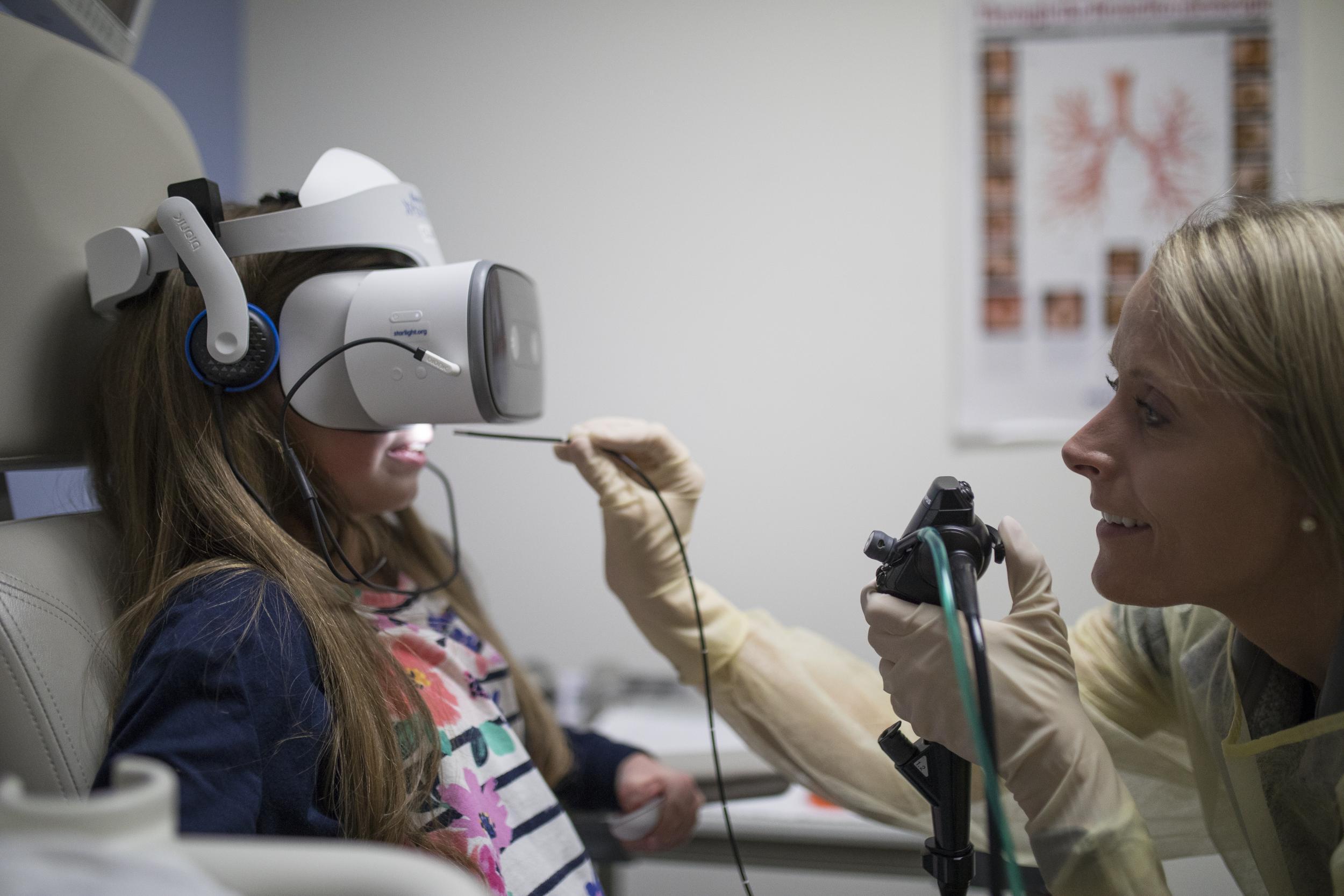The Independent's journalism is supported by our readers. When you purchase through links on our site, we may earn commission.
How Lenovo VR headsets are helping patients tolerate pain
In the Children’s Hospital Colorado, VR is gradually being introduced in place of general anaesthesia to help child patients and their families


Imagine a world where pain, wherever possible, could be alleviated. Imagine a world where parents no longer have to suffer the anguish of watching on as their children are administered general anaesthetics or pain relief as part of their ongoing medical treatment.
Today, that dream is closer to reality. Thanks to the transformative effects of game-changing technology, the healthcare industry is undergoing the same radical overhaul that has, in the space of a generation, changed how we eat, get around and connect with each other.
Lenovo VR headsets
Technology company Lenovo is at the vanguard of this medical revolution. In association with Starlight Children’s Foundation, an American organisation that offers entertainment to seriously ill children and The Children Hospital Colorado, Lenovo has pioneered the use of innovative technologies, such as Virtual Reality (VR), to reduce pain for children with chronic medical conditions.
At the Children’s Hospital Colorado, one of the foremost children’s hospitals in the US, they have begun using the Lenovo Mirage™ Solo VR headset as part of Starlight Children’s Foundation’s ground-breaking Starlight Virtual Reality programme, with astonishing results.
This VR technology has enabled doctors to use headsets as a procedural tool. The headsets help to reduce stress and anxiety during mild to moderately painful procedures.
By losing themselves in numerous virtual worlds, patients are distracted to help alleviate pain. Using these headsets has meant children have undergone procedures while awake, which can help cut down recovery times as well as reduce the need for medication.
Virtual Reality instead of a general anaesthetic
The Medical Director at Child Life, Children’s Hospital Colorado, Joe Albietz, says VR is having a profound effect on the quality of life for its hospitalised children.
“Due to the distressing nature of treatments such as a lumbar puncture,” he explains. “Where a needle is used to withdraw spinal fluid and sometimes administer medication, our patients often receive the procedure under general anaesthetic. Virtual Reality can be used in place of general anaesthesia to help tolerate pain.”
To back up its belief that technology companies have a moral duty to assist healthcare professionals, Lenovo recently carried out a global survey to discover attitudes towards these progressive technologies. It found that 84 per cent of respondents (over 15,000 people across the world were surveyed) believe technology can empower people, communities and society to help address and solve big global problems, including in the healthcare field.
The CEO of Starlight Children’s Foundation. Adam Garone, is particularly grateful for the advent of this smarter technology, pointing out that happy children heal faster.
He says: “The astounding impact of Starlight’s Virtual Reality programme at Children’s Hospital Colorado affirms our belief in the transformative power of technology to positively affect a child’s experience in the hospital.”
The future of the healthcare industry has arrived. For more information click here